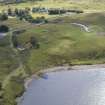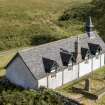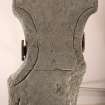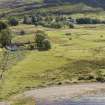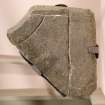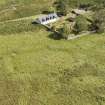Pricing Change
New pricing for orders of material from this site will come into place shortly. Charges for supply of digital images, digitisation on demand, prints and licensing will be altered.
Inchnadamph, Assynt Parish Church, Burial-ground And Macleod Mausoleum
Burial Ground (Medieval), Church (Medieval), Church (18th Century), Cross (Medieval), Mausoleum (17th Century), War Memorial (20th Century)
Site Name Inchnadamph, Assynt Parish Church, Burial-ground And Macleod Mausoleum
Classification Burial Ground (Medieval), Church (Medieval), Church (18th Century), Cross (Medieval), Mausoleum (17th Century), War Memorial (20th Century)
Alternative Name(s) Former Parish Church Of Assynt; Kirktown; Balnaheglise; Achnahiglash; Loch Assynt; Inchnadamph Parish Church, Churchyard And Macleod Vault
Canmore ID 4663
Site Number NC22SW 5
NGR NC 24933 21998
NGR Description Centred NC 24933 21998
Datum OSGB36 - NGR
Permalink http://canmore.org.uk/site/4663
- Council Highland
- Parish Assynt
- Former Region Highland
- Former District Sutherland
- Former County Sutherland
NC22SW 5 centred 24933 21998
(NC 2491 2197) Church (NAT)
OS 6" map, Sutherland, 2nd ed., (1906).
For adjacent moated site ('enclosure'), see NC22SW 6.
The origin of Assynt church is locally ascribed to Angus Macleod, laird of Assynt between 1436 and 1443. The earliest record notice appears to be in 1455. The church stood at Kirktown, Balnaheglise or Achnahiglash, at the E end of Loch Assynt. Between 1780 and 1793 there remained of the original church a high arched vault, the burial place of the Macleods of Assynt, with an apartment above it, supposed to be a place for private devotion. The upper apartment was removed before 1793; the vault, bearing no features of architectural interest, and the cemetery remain. A new church was built in the mid 18th century, and the present church at the end of the 18th century, both outside the old graveyard.
Orig Paroch Scot 1855.
The vault stands in the graveyard SE of the church, and is as described above. It is now empty and can be entered through the doorway in the N side The present church is still in normal use.
Visited by OS (G H P) 23 May 1962.
The vault and present church are as described by the previous authorities except that the vault is no longer accessible.
Visited by OS (J B) 12 August 1980.
MacLeod Vault scheduled.
Information from Historic Scotland, scheduling document dated 8 November 1999.
NC 2493 2199. Two fragments of an Early Historic stone cross were found in Inchnadamph churchyard. Part of the head of a large free-standing cross, along with a small fragment of another arm, both of grey-green metabasic rock. The large fragment is 0.89m long by 0.54m across the end of the arm and 0.36m across the constriction. The smaller fragment is 0.31 x 0.28m and 40mm thick, and appears to be one corner of the end of a cross-arm, broken obliquely. Both pieces have a bevelled incised margin running around the edge.
Museum Accession No: INVMG 2001.048.001-002.
P Weeks 2001.
Field Visit (9 June 1909)
1. Burial Vault, Inchnadamph.
An arched burial vault within the churchyard is said to have formed part of the ancient Parish Church, but it presents no features of architectural interest. It was the burial-place of the Macleods of Assynt. There are no monuments or inscribed stones of any importance within it.
See Origines, ii. pt. ii. p. 693; New Stat. Acct. Suth., etc., xv. p. 111.
OS 6-inch map: Sutherland Sheet lxxi.
RCAHMS 1911, visited (AOC) 9th June 1909.
Reference (2001)
NC 2493 2199 NC22SW 5
The medieval parish church of Assynt, which was founded before 1274 (1), stood in the burial-ground situated 170m E of the head of Loch Assynt. The present church, in the NW angle of the rectangular walled enclosure, is largely of 19th-century date, but the much-altered MacLeod of Assynt burial-aisle was probably attached to the N side of an earlier building in the 17th century. A rectangular earthwork which lies 30m SW of the burial-ground has been identified as a medieval homestead-moat (2), and the MacLeod castle of Ardvreck occupies a promontory 1.8km to the NNW.
Part of the head of a large free-standing cross, re-used as a marker at the head of a graveslab, was identified in 1993 during the present survey, along with a small fragment of another arm. They were subsequently removed for display in the Assynt Heritage Centre, Lochinver. The large fragment is of a grey-green metabasic rock, probably from the SW Highlands (3). It is damaged in places by flaking, and measures 0.89m in length by 0.54m across the end of the arm and 0.36m across the constriction. It tapers in thickness from 90mm at the centre of the cross-head to 75mm at the end of the arm. The outer part of the arm returns straight for 0.18m before curving into long shallow U-shaped armpits. The surface is plain but the edges of one face have neatly-formed bevels of 15mm to 20mm, and within these a margin varying from 40mm to 80mm in width is defined by incised grooves (4). These follow the curve of the armpits, and are intersected towards the centre by a shallower groove parallel to the end of the arm (5). The smaller fragment, 0.31m by 0.28m and 40mm thick, preserves one corner of the end of a cross-arm, broken obliquely, with a similar, but narrower, bevelled and incised margin. The surface is well-preserved, showing the use of an adze or axe and a claw-chisel.
The large fragment was presumably the top arm of the cross, since its margin is twice as wide as that of the other fragment, and the span is likely to have been at least 1.6m. The variation in width of the margin, 40mm in one armpit and 60mm in the other, is however an unexpected feature in such a carefully laid-out design. The scale of the armpits gives the cross some resemblance to that at Kilnave, but the lack of ornament makes dating difficult. There are no medieval parallels for a cross of this type in the West Highland area, and the slightly stilted form of the armpits may indicate the influence of the Anglo-Scandinavian 'hammer-head' type (6).
[additional note, Sept 2001: this stone has been awarded by the Treasure Trove panel to Inverness Museum]
Footnotes:
(1) I B Cowan 1967, 9; OPS 1854, 693.
(2) NMRS database NC22SW 6.
(3) The Commissioners are indebted to Mrs M Campbell, Loch Assynt, for communicating this identification by Dr J Mendum, British Geological Survey.
(4) At one angle of the outer arm, and also on the smaller fragment, the grooves are slightly prolonged beyond their intersections.
(5) In the accompanying reconstruction this forms a central square of the same width as the diameter of the armpits.
(6) Cf. Kilmory Knap (A7, 76(2)).
I Fisher 2001.
Reference (2001)
NC 2493 2199. Two fragments of an Early Historic stone cross were found in Inchnadamph churchyard [the same as those reported in Fisher 2001 No. 23, originally identified in 1993]. Part of the head of a large free-standing cross, along with a small fragment of another arm, both of grey-green metabasic rock. The large fragment is 0.89m long by 0.54m across the end of the arm and 0.36m across the constriction. The smaller fragment is 0.31 x 0.28m and 40mm thick, and appears to be one corner of the end of a cross-arm, broken obliquely. Both pieces have a bevelled incised margin running around the edge.
Museum Accession No: INVMG 2001.048.001-002.
P Weeks 2001.
Field Visit (28 November 2009)
Situated on flat land, accessed by a track leading down from the main road is the current Assynt Parish Church. The building measures 15m x 6m and is aligned E/W with an attached walled area at the W end measuring c. 5m x 5 m. It is surrounded by stone boundary walls which also encompass the graveyard, c. 32m x 26 m from north to south. Exterior walls are pebble-dashed and whitewashed. The gable ends at E and W are up to 7.5m high, the main entrance is in the south wall. There is a spire at the west end. Four windows are present on the south side, two on the north side. A royal air force commemorative monument is located at the west corner of the enclosing wall.
(HLP_ no 144)
Assynt's Hidden Lives Project 2009
External Reference (18 May 2013)
Memorial to crew of RAF Anson N9857, Inchnadamph Parish Church at NC 24964 21943.
The memorial is in the external wall of the churchyard. There was a cairn at the scene of the crash but this has been replaced now by a granite block.
'ROYAL AIR FORCE / FLYING OFFICER / J. N. STEYN DFC / PILOT OFFICER / W. E. DREW / FLIGHT SERGEANT / T. B. KENNY / SERGEANT / J. EMERY / C. M. MITCHELL / H. A. TOMPSETT / HERE ARE COMMEMORATED / THE CREW OF AN AIRCRAFT / CRASHED ON BEN MORE / ON 13TH APRIL 1944 / WHOSE BODIES / REST WHERE THEY FELL'
Information from M Briscoe 18 May 2013








































